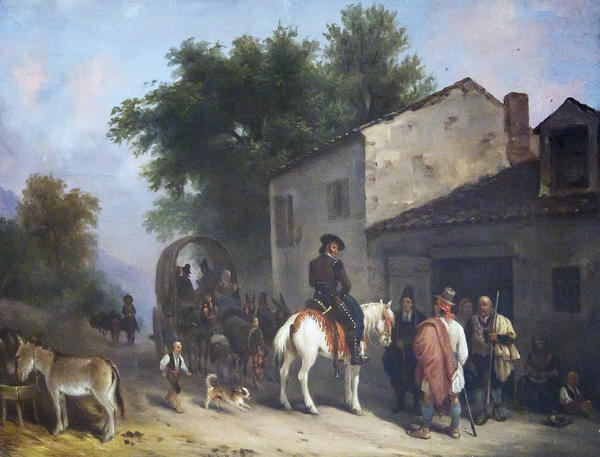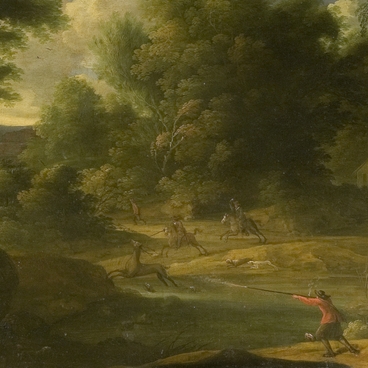The painter’s signature the authenticity of which caused no doubts was first read as Canetta. According to the picture’s motif, the author was attributed to the Spanish painting school. However, a painter with such name was not found in the reference documents.
A new reading of the signature made it possible to ascribe the picture to the Italian landscape painter Giuseppe Canella known for his views of Spain. The published works by this painter are not in contradiction with these findings. As a similarity, it is possible to name the View of the road from Loreto (1835, Milan, Bertorelli’s collection. Canvas, oil 29.5×36.5).
Not much is known about the author. He was born in Verona in 1788, died in Florence in 1847. He worked both as a painter and watercolourist. The subjects of his works were various genre scenes, he also painted landscapes, including sea-pieces. Usually he signed and dated his pictures. The centre of his activities was Milan where he was reputed to be a good landscape painter. He was known to have executed the orders of the French King Louis-Philippe.
Works by Giuseppe Canella are kept in the museum of modern art in Milan, in the museums of Brescia and Verona. Like many painters of that time he liked to travel. Orientalism was in fashion, exotics was the order of the day.
Giuseppe Canella followed suit. The scene at the inn shows an everyday life of people in a Spanish province, on the outskirts of a small town or village. The painter’s perspective can hardly be called superficial. He is interested in this simple, down-to-earth scene which he offers his viewers to look at. The painter is attracted not by the outward exotics which is also present here, but, rather, by the atmosphere of life in a small provincial place.
The peculiar architecture of the inn is rendered with attention. The same applies to any detail within the painter’s sight. Probably, he painted this picture in his studio using sketches made while on the way, without haste and with pleasure. Spain which lived through the tragedy of Napoleon’s invasion arouses the painter’s sympathy. The artist particularly wants to emphasize the peaceful way of life, comfortable and well-organized. A small piece of art by Giuseppe Canella is attractive by its low-key, but genuine poetry, keen observation skills, sympathetic depiction of the people’s life.



